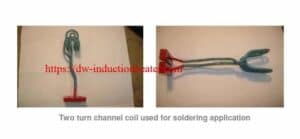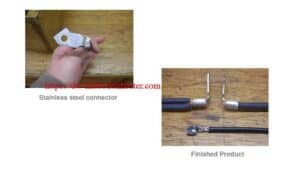Induction Soldering Stainless Steel To Wire With IGBT High Frequency Heating Units
Objective Heat Stainless steel connector for soldering application in automotive wire harness manufacturing
Material Stainless steel connector 1.57” (40mm) long, 0.6” (15mm) OD & 0.4” (10mm) thick. Lead free solder
Temperature 392 ºF (200 ºC)
Frequency 352 kHz
Equipment • DW-UHF-6kW induction heating system, equipped with a remote workhead containing one 1 μF capacitor.
• An induction heating coil designed and developed specifically for this application.
Process A two turn channel coil is used for soldering the connector to the wire harness. The stainless steel connector and wire harness are placed in the coil for 20 seconds for the solder to
fill just the top of the connector.
Results/Benefits Induction heating provides:
• By precisely heating the metal, the plastic shroud is not directly heated
• Reduced production cost
• Faster process time, reduced production cost
• Hands-free heating that involves no operator skill for manufacturing
• Even distribution of heating



